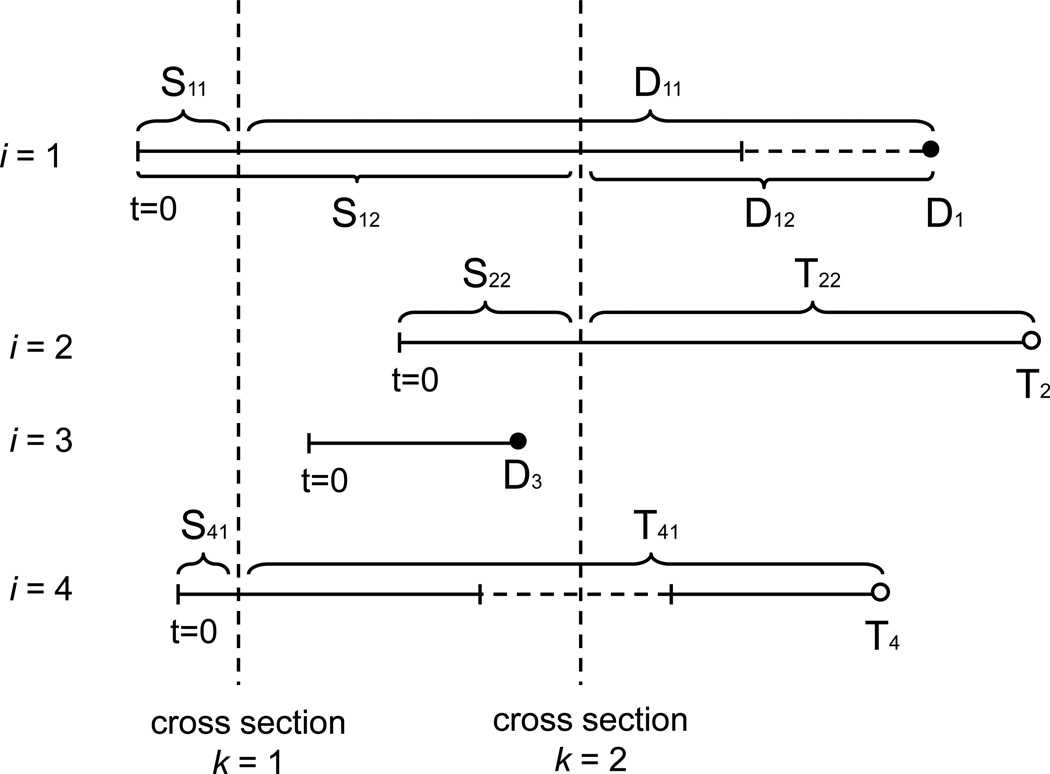Figure 2.
Examples of the relationship between cross-section time and follow-up time. Four subjects (i = 1, …, i = 4) and two cross sections (k = 1, 2) are shown. The four subjects begin follow-up at different calendar dates. For subject i = 1, failure times D11 and D12 correspond to cross sections k = 1 and k = 2, respectively. Note subject i = 1 is not censored at the treatment-ineligible time after cross section k = 2. Subject i = 2 is treated and, hence, dependently censored at time T22 following cross section k = 2. Subject i = 3 is excluded from cross-section k = 1 and k = 2 due to starting and finishing follow-up between CS1 and CS2. Subject i = 4 is included in cross section k = 1, but then becomes (and remains) treatment-ineligible until some a time after cross section k = 2. With respect to cross section k = 1, subject i = 4 is censored at treatment time T41, as opposed to being censored earlier at the beginning of the treatment-ineligible period. Subject i = 4 is treatment-ineligible at cross section k = 2 and, hence, not included in CS2.
Note: Vertical dashed lines denote cross-section dates, while horizontal dashed lines denote treatment-ineligible period.

